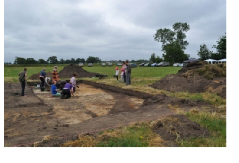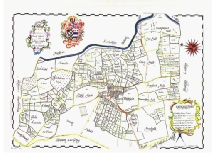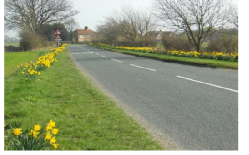


CERAMIC REFERENCE COLLECTION
The final element of this project was to put the things that we found and the money we had spent on getting them officially identified, to good use. In short, we would not always have Heritage Lottery funding at our disposal but, we might want to continue with our research and other groups in our vicinity might find themselves in the position that they needed to identify items being recovered in their areas. In addition, in the early stages, we visited the Yorkshire Museum and the Museum’s bulk storage facility in an effort to get items identified but found that there was very little correlation between things being found in York and in our area.
The answer seemed to be to create a ‘stand-
Once again, the magical fingers of Tony Stevens created the boxes and it was then a reasonably easy task to group the items in age, type and size and make suitable safe storage compartments out of card and foam plastic that can easily be modified as new items become available at very little extra cost.
The Reference Collection is available to other groups who may be wishing to compare our professionally identified collection of artefacts with item found in their landscape. There is no charge for this service although a donation to our funds would not be refused.